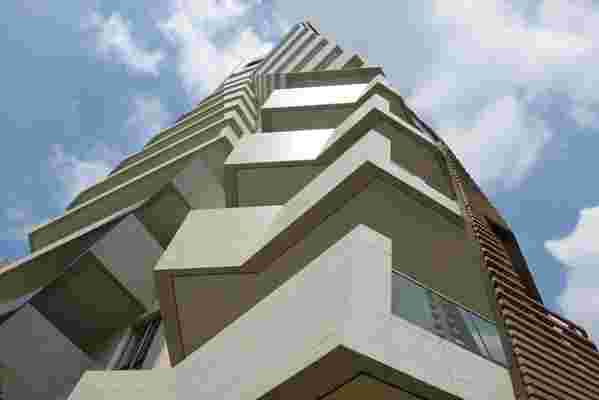In Milan , city officials and development company Assicurazioni Generali are in the midst of transforming Milano Fiera, a 90-acre site first built to host a 1920 trade fair. The location, just west of La Triennale , takes advantage of a rare find: a swath of available land in the historic center of an otherwise dense city. Called City Life, the residential, commercial, and cultural complex is being designed by three different architecture firms: Studio Libeskind , Zaha Hadid Architects , and Arata Isozaki & Associates. City Life will also create a new subway stop for the city’s metro, a system which serves over one million riders each day.

A view looking up a building shows Libeskind’s distinctive angular design.
During last month’s Salone Mobile , architect Daniel Libeskind, who conceived the project’s master plan and who moved to the city on a part-time basis to oversee the design, unveiled the residential components his firm created. Situated along City Life’s perimeter, the buildings respond to the scale of their context, ranging from small villas to a 14-story tower. Clad in Italian tile, the structures are contoured with Libeskind’s distinctive angularity. Wood brise-soleils provide shade from the intense Italian sun while softening the appearance of the façades. Collectively, the buildings help frame a central courtyard—a nod to Italy’s architectural history and a big amenity for contemporary life. As Libeskind said in a statement, “While a new lifestyle emerges in Milan, there is a need to connect work and new possibilities of living in a sustainably responsive and environmentally advanced way.”
